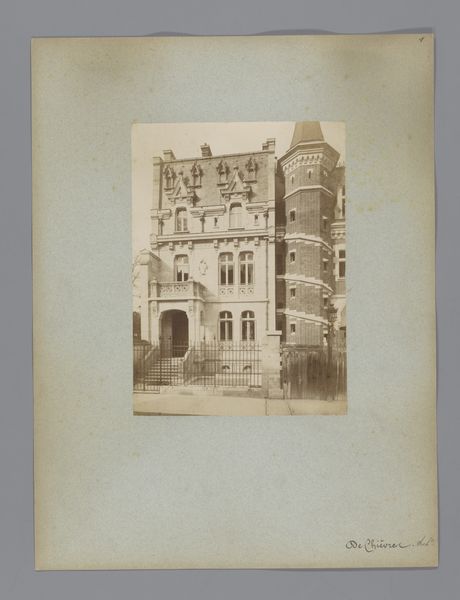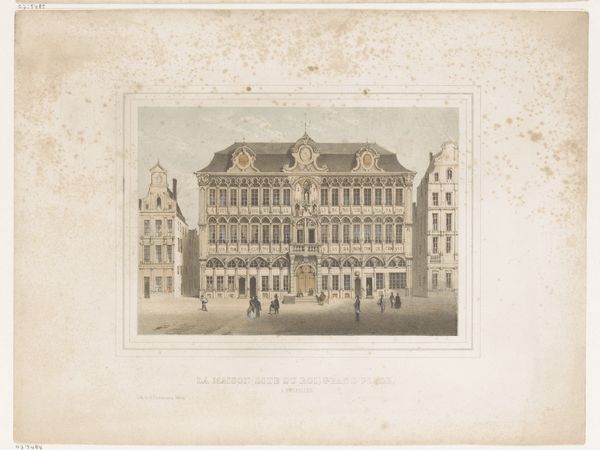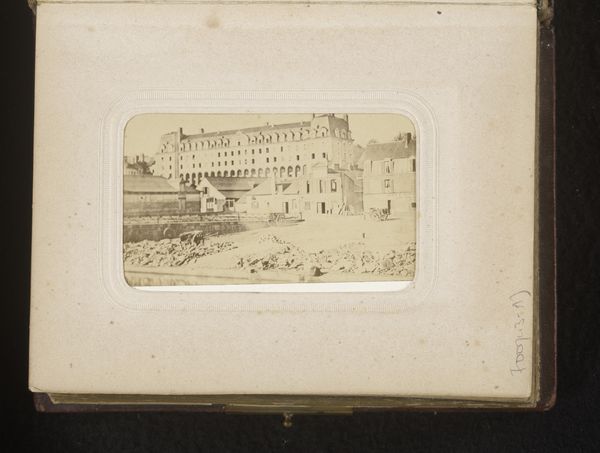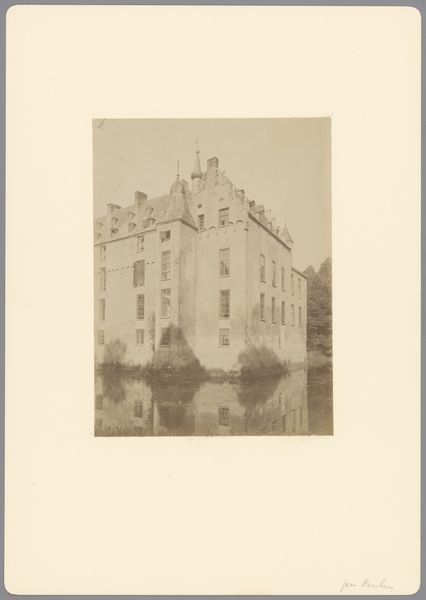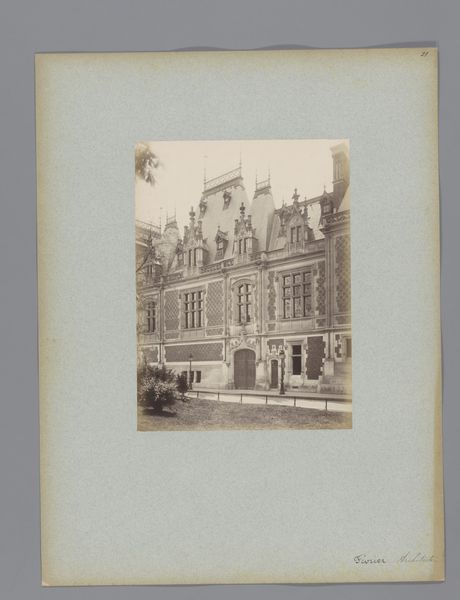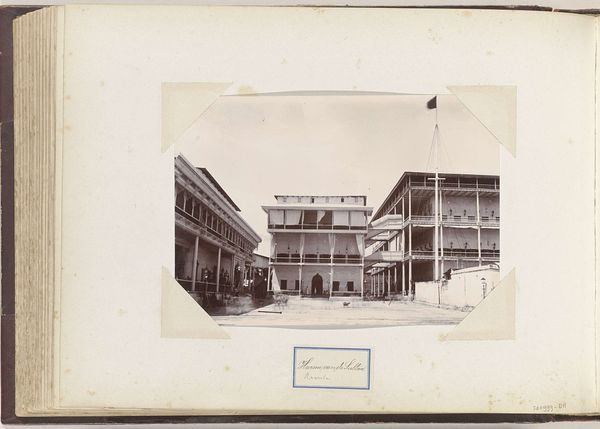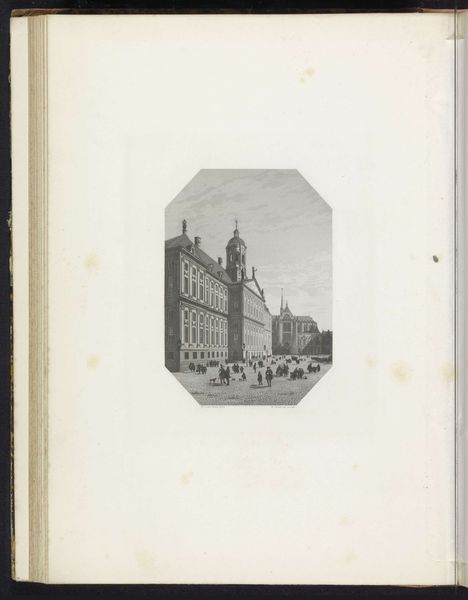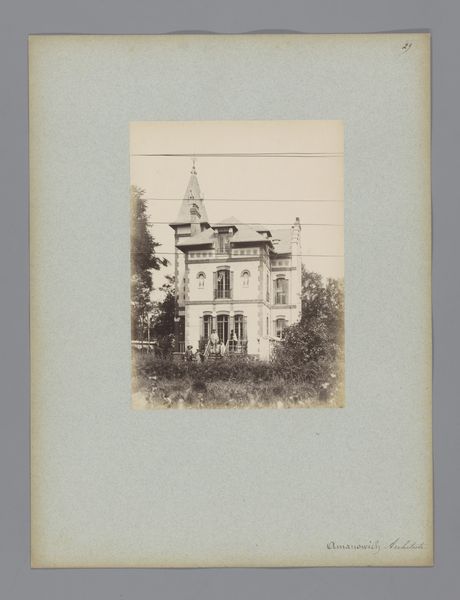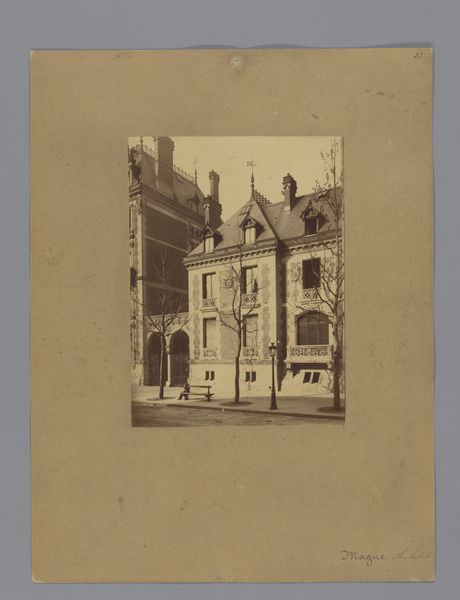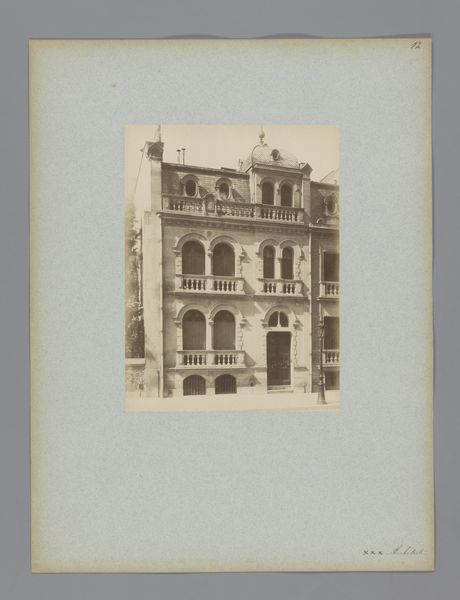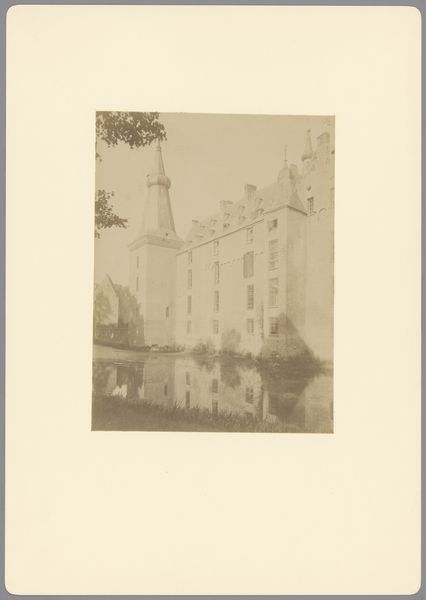
De pakhuizen Medan, Bindjeij en Laboean aan de Houtmankade in Amsterdam 1900 - 1920
0:00
0:00
nicolaasschuitvlot
Rijksmuseum
photography
#
dutch-golden-age
#
landscape
#
photography
#
cityscape
#
realism
Dimensions: height 204 mm, width 168 mm, height 368 mm, width 296 mm
Copyright: Rijks Museum: Open Domain
Editor: A somber elegance hangs over this scene, wouldn't you say? The light, the austere lines of the buildings... Curator: Indeed. We're looking at a photograph from between 1900 and 1920 by Nicolaas Schuitvlot. Its full title is "De pakhuizen Medan, Bindjeij en Laboean aan de Houtmankade in Amsterdam," depicting warehouses along the Houtman quay. Note the interplay of light and shadow, a very important element. Editor: And the texture, too, the grainy materiality of the photograph itself, which lends this work a strange palpability. It reminds us of its making and survival through the years. How does this play with our perceptions of Dutch Golden Age cityscapes? Curator: An excellent point. Semiotically, we can understand the photograph's monochrome palette and rigorous composition, along with the specific structural repetition of these buildings as symbolic of that era, which it evokes rather than strictly replicates. These aren’t simply containers, they are also statements about Amsterdam's prominence and commercial ambition. Editor: I find myself considering what kinds of goods would pass through these warehouses—what were the modes of transportation, who were the labourers? It begs for stories beyond its surface, it makes us think about the networks of people and capital that such structures housed. And it challenges a formalist emphasis, redirecting attention to lived spaces of manufacture and trade. Curator: You highlight crucial layers to the work: its role as an urban landscape study, showcasing architectural forms with an attention to realism and structural precision, is key. In this case, it's crucial to analyze it using the photographic medium, too, and ask what photography's unique contributions are for representing the Dutch Golden Age aesthetic. Editor: Precisely. The act of recording—the chemicals, the equipment, the sheer laboriousness of photography—all contributes to the content. It reveals not only a view, but also an elaborate manufacturing operation which extends into networks of international capital, implicating many layers of culture, economy, and technique. Curator: In that regard, examining this photograph truly enhances our appreciation not only of its visual intricacies, but of the stories imbedded within and outside its frame. Editor: Agreed. It prompts reflection on both the built environment and the labour and means that bring these grand facades into being, reminding us that aesthetics and work are intertwined.
Comments
No comments
Be the first to comment and join the conversation on the ultimate creative platform.
